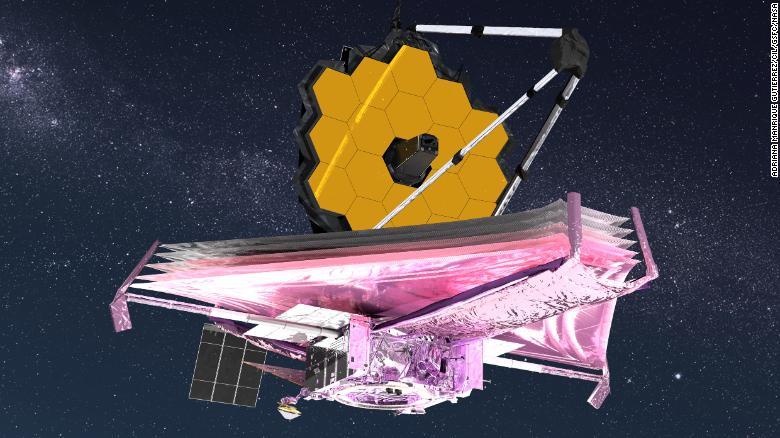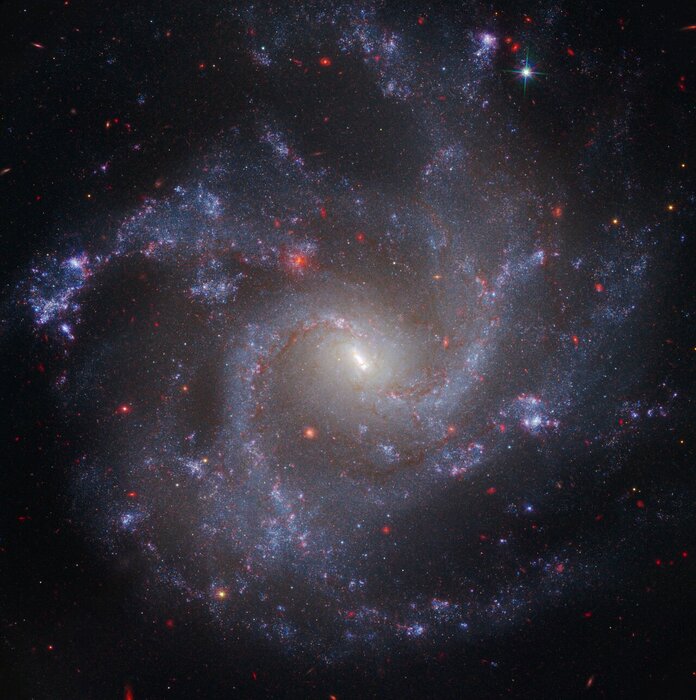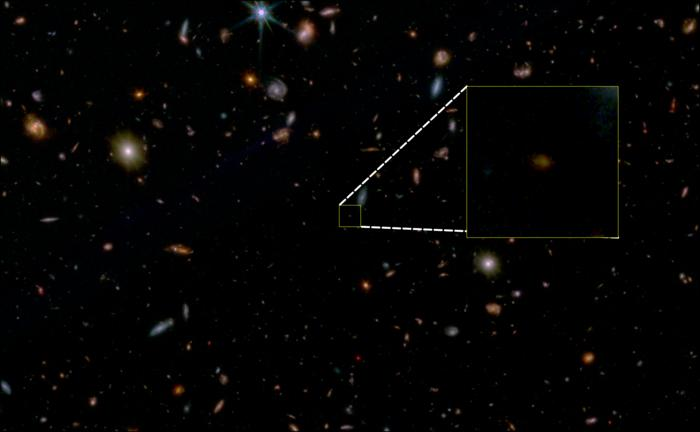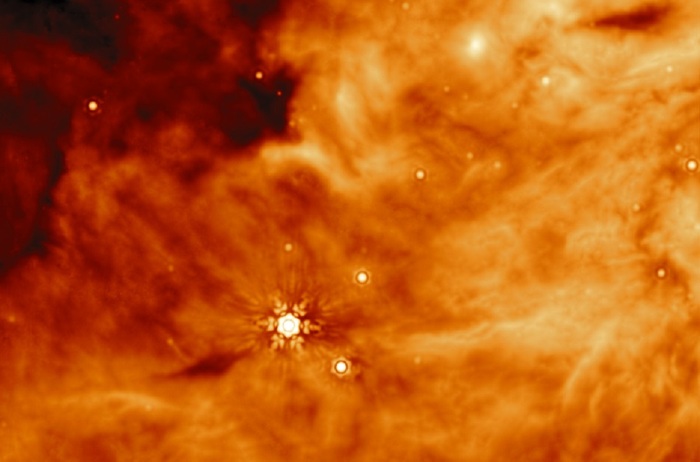Know what temperatures the Webb Telescope must withstand 0:56
(CNN) -
The launch of the James Webb Space Telescope was just the beginning.
Billed as NASA's premier space observatory for the next decade, the telescope launched on Christmas Day, and it still has a way to go before it enters orbit and takes a look at the universe.
The agency refers to this process as "29 days to the limit" as the observatory unfolds its huge parasol and reaches a special point in orbit that is 1.6 million kilometers from Earth.
This was the launch of the James Webb space telescope 1:06
The Webb Telescope will observe all phases of cosmic history, including the first glows after the Big Bang that created our universe and the formation of the galaxies, stars and planets that fill it today.
Its capabilities will allow it to peer into the atmospheres of exoplanets and investigate the faint signals from the first galaxies formed 13.5 billion years ago.
To accomplish all of this, NASA built its most complex telescope to date, and everything has to work perfectly before it can get down to business.
During these 29 days, Webb will establish himself, unfolding his gigantic gold mirror and protective parasol the size of a tennis court.
Thousands of pieces are involved in this process that must work in harmony, in the correct sequence.
Fortunately, each step can be controlled from the ground in case of problems.
advertising
So far, Webb is off to a great start.
The spacecraft has already performed two of the three critical heading correction burns to ensure it is on the correct trajectory.
This image shows NASA's last look at the telescope after launch, captured by cameras aboard the rocket's upper stage when the telescope was separated from it.
Earth is seen in the upper right.
Less propellant was also used than anticipated due to the precision of the telescope launch aboard the Ariane 5 rocket, so "the observatory should have enough propellant to support in-orbit science operations for well over a scientific lifetime. 10 years old, "according to NASA.
The mission was designed to last five years.
But, as we've seen with other telescopes that have successfully passed their deadline, such as Spitzer and Hubble, scientists are betting that the same can happen with Webb.
On December 26, Webb debuted its array of antennas, including a high-speed satellite dish, which will enable the telescope to send 28.6 gigabytes of science data twice a day.
Astronomers, including those at the Virtual Telescope Project, have even been able to follow Webb's journey since its launch, sharing images and videos of the observatory against a backdrop of stars.
Look at the last image we'll see of the Webb telescope 0:59
Sun protection
Now, Webb is starting to take on a familiar form, the one it will have once everything is fully unfolded.
The ship has deployed and nested the pallet structures that will ultimately lead to the deployment of the parasol, a process that is expected to continue through Sunday.
The team also extended the deployable tower assembly, which creates distance between the two halves of the spacecraft.
The observatory is made up of three main elements.
One is the Integrated Scientific Instruments Module, which houses Webb's suite of four instruments.
These instruments will be used primarily for imaging or spectroscopy, that is, the decomposition of light into different wavelengths to determine the physical and chemical components.
The element of the optical telescope, the main eye of the observatory, includes the mirrors and the back plate, or spine, that supports the mirrors.
Lastly, the spacecraft element, which includes the ship's bus and sun visor.
The bus includes the six major subsystems required to operate the spacecraft, such as propulsion, electrical power, communications, data, and thermal controls.
The massive five-layer sunshade will protect Webb's gigantic mirror and instruments from the sun's heat, as they must be kept at a very cold -188 ° C in order to observe the universe as designed.
This illustration shows the Webb telescope with its mirror and sun visor fully deployed in space.
According to the agency, the deployment of the parasol is essential for the operation of the Webb telescope and, in addition, it is one of the most complicated that NASA has carried out.
"There are 50 major deployments that transform the Webb from its launch configuration into a working observatory," said Michael McElwain, project scientist for the Webb Observatory at NASA's Goddard Space Flight Center in Maryland, in a statement.
"Although these steps have been ground tested and operationally rehearsed at the Mission Operations Center, these critical activities must be executed for a successful mission. Best wishes to our team, and stay cool, Webb!"
Know what temperatures the Webb Telescope must withstand 0:56
The next steps
Next, Webb will release the sunshade covers, extend the arms, and stretch the five layers of the sunshade in place, if all goes as expected.
Then there is the mirror, considered the hallmark of the Webb telescope.
The telescope comes equipped with a mirror that can extend 6.5 meters, an enormous length that will allow the mirror to collect more light from the objects it observes once the telescope is in space.
The mirror includes 18 gold-plated hexagonal segments, each 1.32 meters in diameter.
It's the largest mirror NASA has ever built, but its size created a unique problem.
The mirror was so large that it could not fit inside a rocket.
So engineers designed the telescope as a series of moving parts that can be folded in origami style and fit within a 5-meter space for launch.
Ball Aerospace Optical Technician Scott Murray inspects the first gold segments of the primary mirror during assembly.
Here's the next series of crucial steps for the Webb: making sure all those mirrors unfold and snap together to create one giant mirror.
All of these steps are expected to be complete by the end of next week.
Finally, Webb will make one more trajectory adjustment to insert itself into an orbit that reaches beyond the Moon.
While this will complete the 29 days of deployment, the telescope will enter a commissioning period in space that will last six months, which involves instrument cooling, alignment and calibration.
All instruments will go through a process of verification of their operation.
The Webb will begin collecting data and its first images as early as 2022, and are expected to be released in June or July, forever changing the way we view and understand the universe.
Webb Telescope








